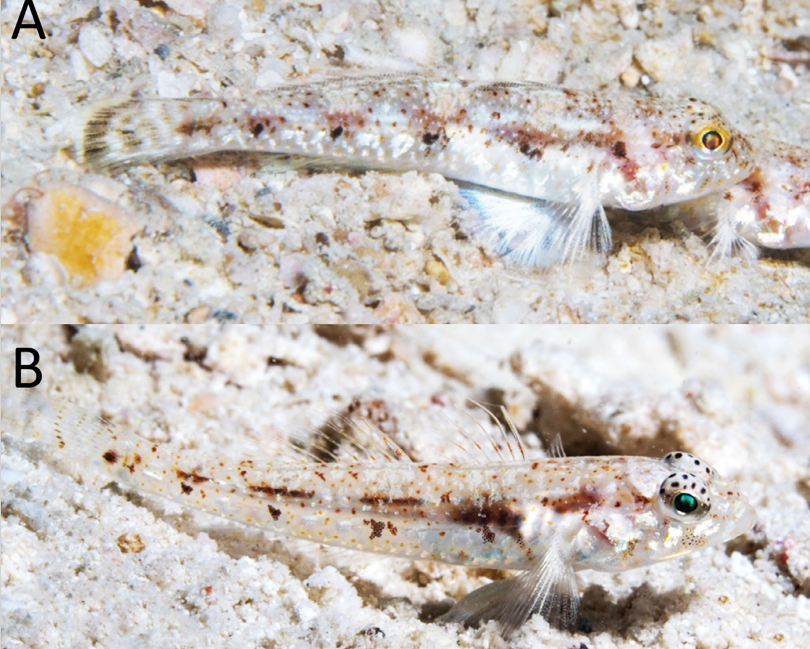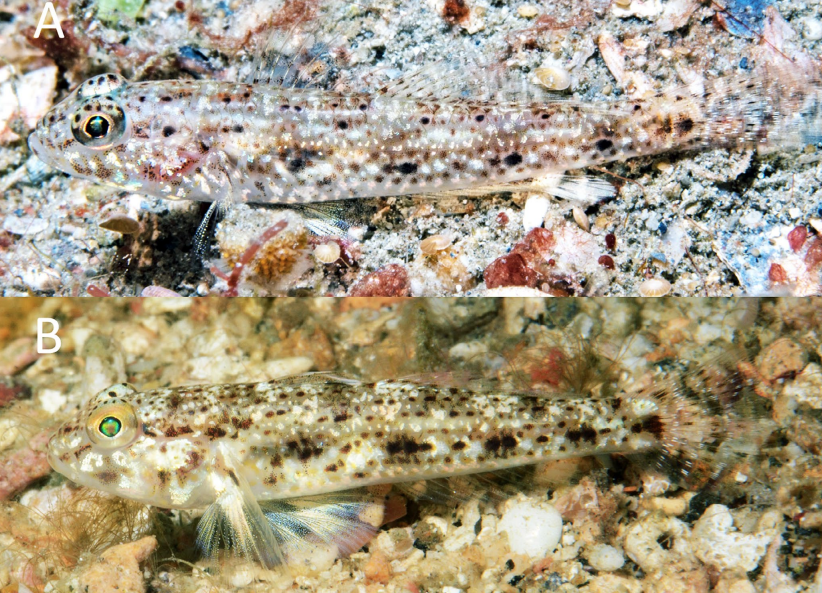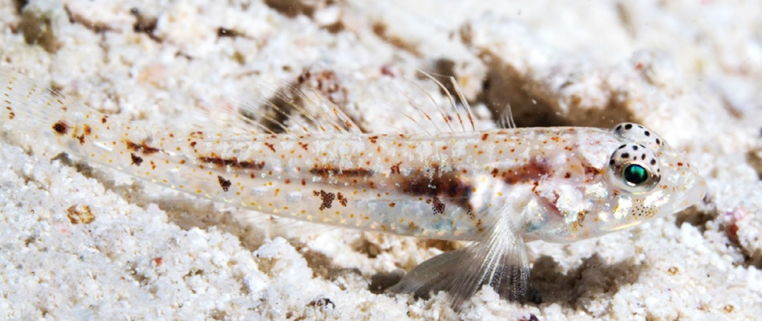A new species of tiny goby has been described from the Louisiade Archipelago of Milne Bay Province, Papua New Guinea. Named the Louisiade Sand-goby, Hazeus paucisquamatus is described based on four specimens, two males and two females, ranging in size from 21-25mm in length, with no size difference between the sexes.
The new species occurs on sheltered silty-sand bottoms of fringing reefs and lagoons in 15–20 m depth and is currently only known from the Louisiade Archipelago and the Deboyne Islands east of the Papua New Guinea mainland.

(M.V. Erdmann).
There are eight other species within the genus Hazeus; H. ammophilus, diacanthus, elati, ingressus, maculipinna, nephodes, otakii, and profusus. Hazeus ammophilus and profusus were only described last year by goby specialists Gerald R Allen and Mark V Erdmann, and they’ve struck again in 2024 (along with William M Brooks,) in describing this, the ninth species, H. paucisquamatus.
The Louisiade Sand goby differs from its congeners by head scalation patterns, thickened, rigid, and pungent first spines of both the first and second dorsal fins and the third dorsal-fin spine longest. It can be further separated from its 8 congeners by markings on the male, specifically a mid-lateral row of dark-brown spots, a dark anal fin, and a characteristic medial black stripe on the pelvic fins.

H.ammophilus and profusus live sympatrically with the new species H.paucisquamatus. Their small size, perfect camouflage, location, and at a glance similarity have prevented their discovery as new, previously undescribed species until now.
Access the full paper at https://doi.org/10.5281/zenodo.10846448



